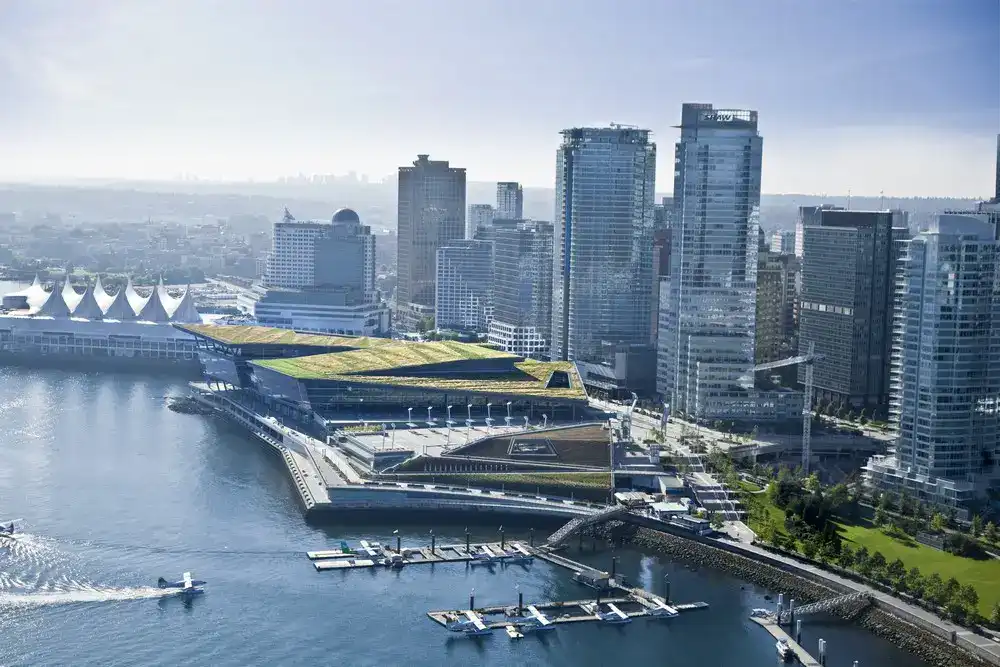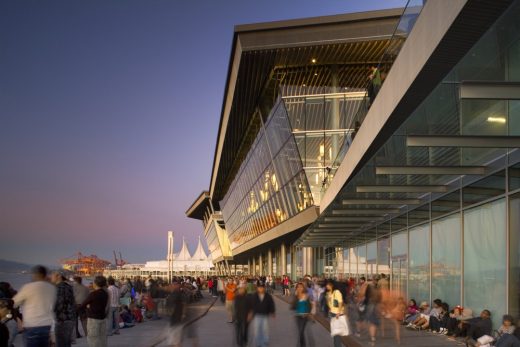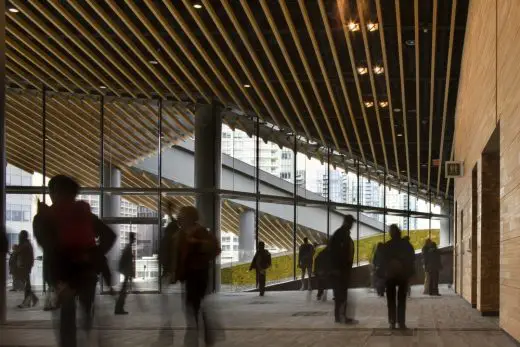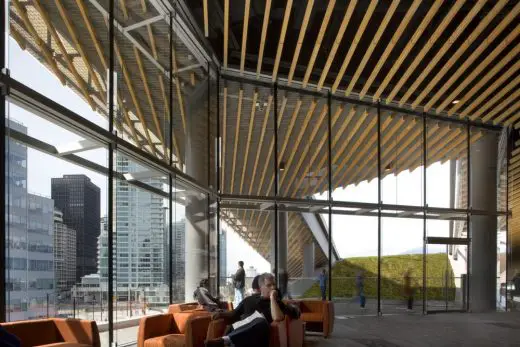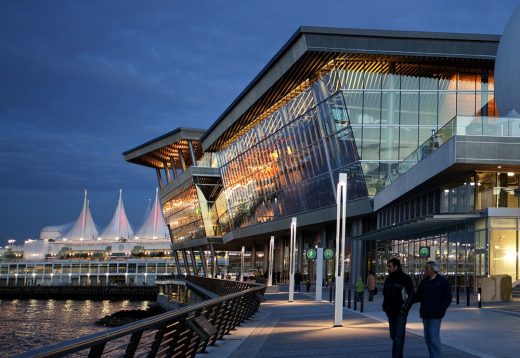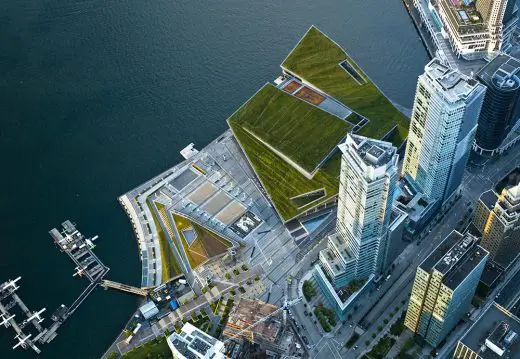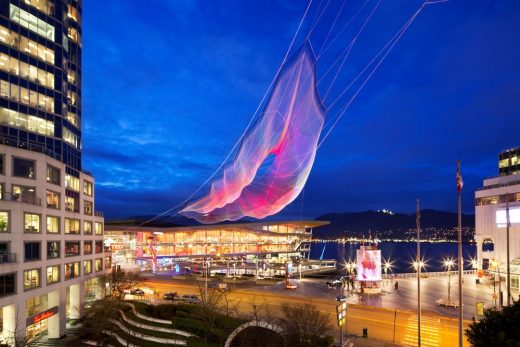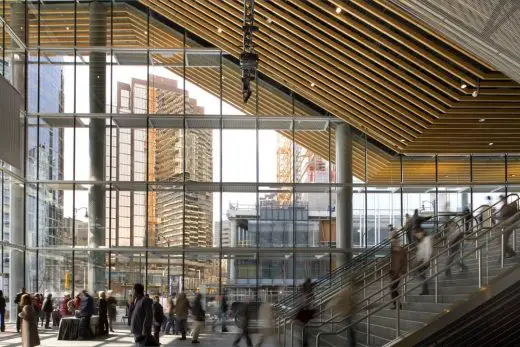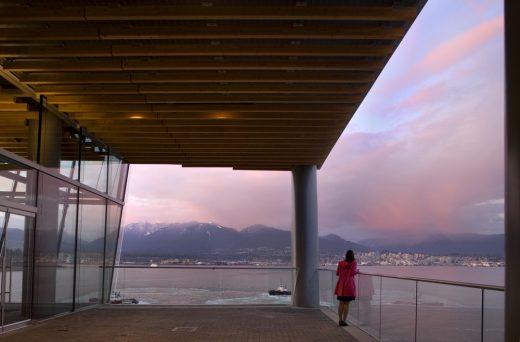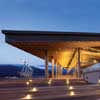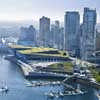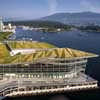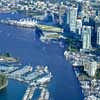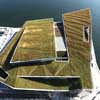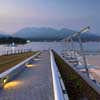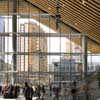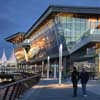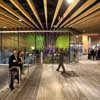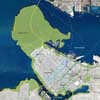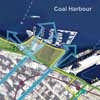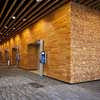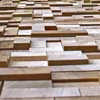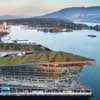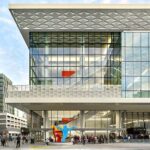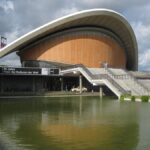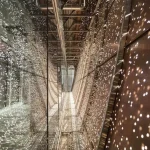Vancouver Convention Centre news, VCCW building photo, British Columbia design images
Vancouver Convention Centre West
BC Architecture Development by LMN Architects + DA/MCM in British Columbia, Canada
post updated February 27, 2025
Design: LMN Architects + DA/MCM
LMN Architects-designed Vancouver Convention Centre West becomes first Double LEED Platinum certified convention center
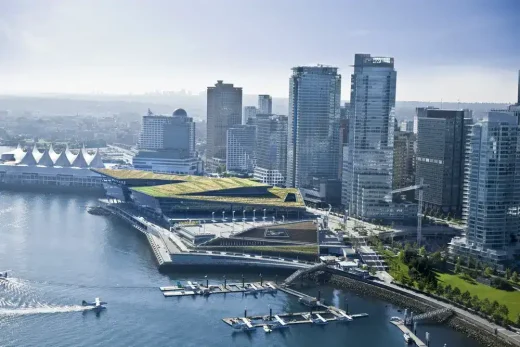
photo Courtesy of LMN Architects
16 Feb 2010
Vancouver Convention Centre Award
Vision
The world’s first double LEED Platinum convention center, Vancouver Convention Centre West fully integrates the urban ecosystem at the intersection of a vibrant Vancouver Downtown condos section and one of the most spectacular natural ecosystems in North America. The culmination of two decades of planning and redevelopment for its waterfront neighborhood, the project weaves together architecture, interior architecture, and urban design in a unified whole that functions literally as a living part of both the city and the harbor.
Site and Program
The extensive and complex program encompasses at once a single building and a new urban district. Occupying a former brownfield site on the downtown waterfront, the development is approximately 14 acres on land and 8 acres over water, with 1 million square feet of convention space, 90,000 square feet of retail space, 450 parking stalls, and 400,000 square feet of walkways, bikeways, public open space, and plazas.
The public realm extends through and around the site including a waterfront promenade featuring restaurants, retail storefronts, and public art, while infrastructure for future development extends into the water. An integrated float plane terminal provides undoubtedly the most spectacular way of arriving at the facility.
At the center of the public realm, the project’s Jack Poole Plaza is the city’s first major gathering space on the water’s edge, and the permanent home of the 2010 Olympic Torch.
Design
The architectural approach creates a community experience that is simultaneously a building, an urban plaza, a park, and an ecosystem. The convention center program emphasizes spaces for both public and private events, gatherings, and circulation, mixing the energy of convention visitors with the life of the city.
The building’s landforms fold in specific ways to embrace the downtown street grid and preserve view corridors out to the water. The entire perimeter enclosure is an ultra-clear glass system, visually reinforcing the integration of urban and waterfront context into the user experience of the building.
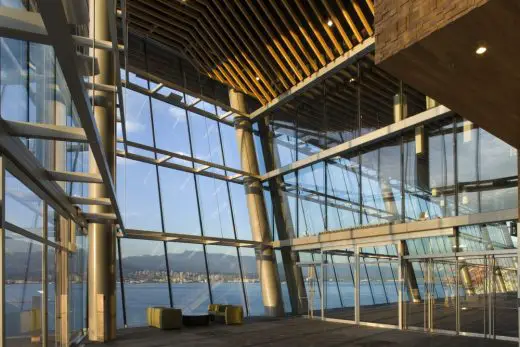
photo Courtesy of LMN Architects
The iconic living roof, visible from throughout the city, forms the terminus of a chain of waterfront parks that rings the harbor and creates continuous stepping-stone habitat between the convention center and Stanley Park. Less visible but equally productive, an artificial concrete reef drops below the waterfront promenade, designed in collaboration with marine biologists to restore the ecology of the natural shoreline.
The building’s landforms create a topographical experience on the interior. Materiality is based around the use of indigenous British Columbia wood, expressed in the strong directional lines of the ceiling plane as well as wall cladding that simulates the texture of stacks of lumber.
The interior is constantly connected to daylight and views, setting up an extroverted, community-friendly relationship with the exterior and connecting the interior experience with the life of the city and the waterfront. Transparency serves as an orienting device for users in the facility, anchoring each space to the unique views available from its vantage point. By night, the lit interior creates an urban lantern at the water’s edge.
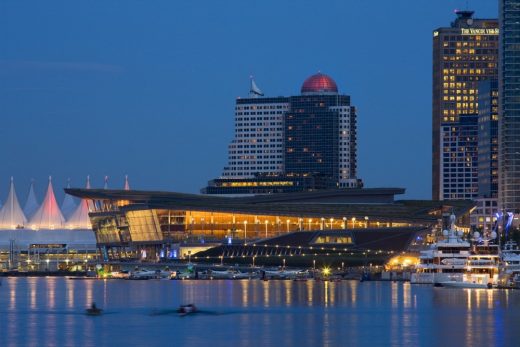
photo Courtesy of LMN Architects
Sustainability
The most visible evidence of the project’s deep approach to ecology is its living roof—at 6 acres it is the largest in Canada, hosting some 400,000 indigenous plants and 240,000 bees in 4 colonies that provide honey for the convention center restaurant. The roof’s sloping forms build on the topography of the region, creating a formal as well as ecological connection to nearby Stanley Park and the North Shore Mountains in view across the Burrard Inlet.
The slopes set up natural drainage and seed migration patterns for the roof’s ecology. The roof has no public access points, allowing it to develop as a fully functional habitat for migrating wildlife, while the landforms fold to allow views onto the lush vegetation from inside and outside the building.
Some 35% of the project is built on piles over the water, surrounded by a custom-designed marine habitat skirt consisting of 5 concrete tiers that provide rocky surfaces for marine life to attach.
Each tier supports a separate set of biota depending on the water depth, forming a complete shoreline ecosystem including salmon, crabs, starfish, shellfish, and dozens of other native species. Runnels built into the tide flats beneath the building create additional tidal habitats that flush daily.
The internal metabolism of the building draws many of its inputs from the site’s renewable resources. A seawater heat pump system, for example, takes advantage of the constant temperature of seawater to produce cooling for the building during warmer months and heating in cooler months, contributing to a reduction in energy use of 60% over typical convention centers.
A water conservation and reuse system reduces potable water use by 70%, including an on-site blackwater treatment plant that cycles all wastewater from the building including stormwater from the living roof, and returns it for irrigation and other gray water needs.
Socially, the project defines an urban district that is the focal point of the downtown waterfront in a city of intense civic involvement and environmental awareness. An early indication of its value to the city is that the building served as the International Broadcast Centre for the 2010 Olympic Games, with the public plaza as the site for the Olympic Torch.
Having tripled the city’s convention capacity, the project continues to reap economic benefits for the British Columbia region with record bookings surpassing expectations, and was recently selected as the home of the international TED Conference.
LMN Wins National AIA COTE Award for LEED Platinum Certified Vancouver Convention Centre
Vancouver Convention Centre West has been selected as one of the Top Ten Green Projects awarded by the American Institute of Architects (AIA) Committee on the Environment (COTE).
LMN will be honored for this prestigious award – which highlights the top 10 examples of sustainable architecture and green design solutions that protect and enhance the environment – at the AIA National Convention and Design Exposition in New Orleans 12-14 May 2011.
The COTE Top Ten Green Projects program, now in its 15th year, celebrates projects that are the result of a thoroughly integrated approach to architecture, natural systems and technology. They make a positive contribution to their communities, improve comfort for building occupants and reduce environmental impacts through strategies such as reuse of existing structures, connection to transit systems, low-impact and regenerative site development, energy and water conservation, use of sustainable or renewable construction materials, and design that improves indoor air quality.
Vancouver Convention Centre West Building News
LMN Architects + DA/MCM
Opened Apr 2009
LMN Architects-designed Vancouver Convention Centre West is World’s First Convention Centre to Achieve LEED Platinum Rating
Building is home to international media at 2010 Olympic Games
VANCOUVER, B.C.- As media from around the world descend upon Vancouver, B.C. for the 2010 Olympic & Paralympic Winter Games, they will experience in the Games’ broadcast media center an unparalleled model of sustainability. Designed by Seattle-based LMN Architects, in collaboration with Vancouver-based MCM and DA, the Vancouver Convention Centre West (VCC) has just been awarded LEED® Canada Platinum certification, the first convention centre project in the world to earn what is the program’s highest rating.
“The design goes far beyond the big box functionality and experience of a traditional convention centre,” says Mark Reddington, FAIA, LMN partner. “Instead, it offers a new vision of sustainability and a rich public experience by weaving together the natural ecology, local culture, urban context, and building program in a unified whole that functions literally as a living part of both the city and the harbor.”
A prominent feature to be recognized around the world is the centre’s six-acre living roof, which is Canada’s largest and the biggest non-industrial living roof in North America. Landscaped with 400,000 native plants and grasses, the green roof acts as an insulator to mediate the exterior air temperature, as well as contributes to the building’s stormwater utilization and integrates with the waterfront landscape ecosystem.
Highlights of the building’s green features include:
” Restored marine habitat that is part of the building’s foundation
” On-site black water treatment and desalinization systems that are projected to reduce potable water use 60 to 70 percent over typical convention centers
” A heat pump system that takes advantage of the constant temperature of the adjacent seawater to produce heating and cooling
” Extensive use of local materials, including Douglas fir and Hemlock wood finishes harvested from Vancouver Island and the Sunshine Coast
” Energy efficient fixtures and advanced energy management systems
” Natural daylighting and ventilation
Located on one of the most visible civic building sites in North America, the Vancouver Convention Centre sits on the on the northern waterfront edge of downtown Vancouver with spectacular views of mountains, ocean and parks. It occupies what was the last undeveloped section of the city’s waterfront and completes the public realm on the waterfront.
With this year’s Olympic Games being touted as the greenest Olympics to date, the VCC serves as an icon of that vision, with a wealth of innovative green features that educate as well as inspire. The new 1.2 million square foot world-class venue is the west companion to the existing facility, tripling the total square footage of convention centre space and providing an unprecedented range of flexible and functional spaces for meetings of any size.
The convention centre is a project of BC Pavilion Corporation (PavCo), a Crown Corporation of the Province of British Columbia.
The project was a collaboration among LMN (design architect), Vancouver-based Musson Cattell Mackey and DA Architects + Planners.
Previously:
Situated on Vancouver’s waterfront with spectacular views of mountains, ocean, and parks, the Vancouver Convention Centre West is designed to bring together the natural ecology, vibrant local culture, and built environment, accentuating their interrelationships through the architecture. Opening April 2009, the Convention Centre West expansion facility triples the total square footage and functional capacity as well as completes the development of the public realm on the waterfront.
Seattle-based LMN Architects designed the Vancouver Convention Centre West as a compelling vision of what a civic building can be—a celebration of people and place and a model of sustainability. One of the greenest convention centers in the world, the project is in on track to achieve LEED® Canada Gold certification. LMN worked in collaboration with Vancouver-based Musson Cattell Mackey Partnership and DA Architects & Planners to design the convention center.
Vancouver Convention Centre : Further Information

photo : Nic Lehoux
Contact Vancouver Convention Centre: (604) 689-8232
Address: Vancouver Convention Centre, 1055 Canada Place, Vancouver, BC V6C 0C3, Canada
+++
Canada Architecture
Vancouver Architecture Walking Tours
+++
Vancouver Buildings
Harvest Green Project Vancouver
Sauder School of Business Vancouver
UBC Faculty of Pharmaceutical Sciences Vancouver
+++
Convention Centre Buildings
Modern Conference Center Building Designs – architectural selection below:
Dalian International Conference Center
Buildings / photos for the Vancouver Convention Centre West Canada Architecture page welcome

